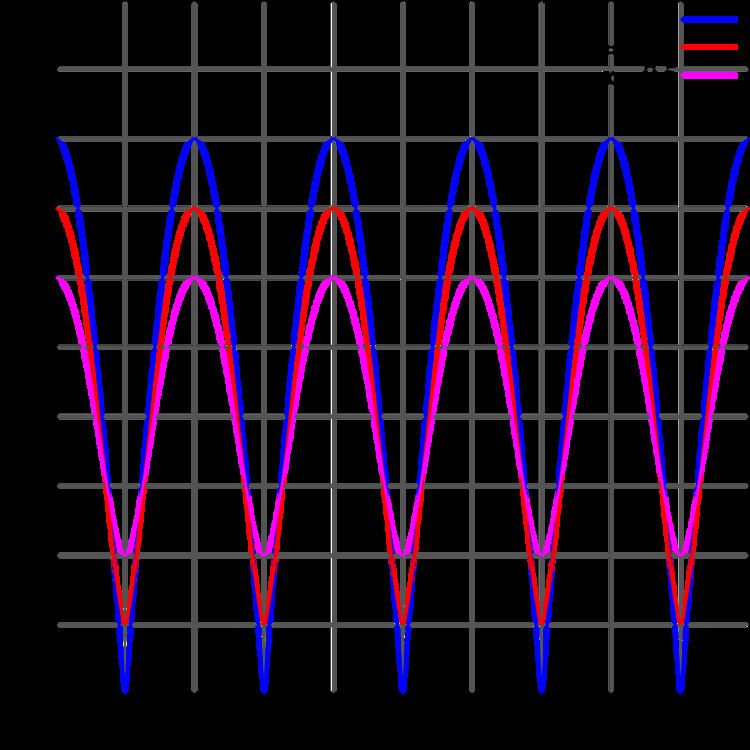 | ||
In signal processing, a comb filter adds a delayed version of a signal to itself, causing constructive and destructive interference. The frequency response of a comb filter consists of a series of regularly spaced notches, giving the appearance of a comb.
Contents
Applications
Comb filters are used in a variety of signal processing applications. These include:
In acoustics, comb filtering can arise in some unwanted ways. For instance, when two loudspeakers are playing the same signal at different distances from the listener, there is a comb filtering effect on the signal. In any enclosed space, listeners hear a mixture of direct sound and reflected sound. Because the reflected sound takes a longer path, it constitutes a delayed version of the direct sound and a comb filter is created where the two combine at the listener.
Technical discussion
Comb filters exist in two different forms, feedforward and feedback; the names refer to the direction in which signals are delayed before they are added to the input.
Comb filters may be implemented in discrete time or continuous time; this article will focus on discrete-time implementations; the properties of the continuous-time comb filter are very similar.
Feedforward form
The general structure of a feedforward comb filter is shown on the right. It may be described by the following difference equation:
where
We define the transfer function as:
Frequency response
To obtain the frequency response of a discrete-time system expressed in the Z domain, we make the substitution
Using Euler's formula, we find that the frequency response is also given by
Often of interest is the magnitude response, which ignores phase. This is defined as:
In the case of the feedforward comb filter, this is:
Notice that the
The graphs to the right show the magnitude response for various values of
Impulse response
The feedforward comb filter is one of the simplest finite impulse response filters. Its response is simply the initial impulse with a second impulse after the delay.
Pole–zero interpretation
Looking again at the Z-domain transfer function of the feedforward comb filter:
we see that the numerator is equal to zero whenever
Feedback form
Similarly, the general structure of a feedback comb filter is shown on the right. It may be described by the following difference equation:
If we rearrange this equation so that all terms in
The transfer function is therefore:
Frequency response
If we make the substitution
The magnitude response is as follows:
Again, the response is periodic, as the graphs to the right demonstrate. The feedback comb filter has some properties in common with the feedforward form:
However, there are also some important differences because the magnitude response has a term in the denominator:
Impulse response
The feedback comb filter is a simple type of infinite impulse response filter. If stable, the response simply consists of a repeating series of impulses decreasing in amplitude over time.
Pole–zero interpretation
Looking again at the Z-domain transfer function of the feedback comb filter:
This time, the numerator is zero at
Continuous-time comb filters
Comb filters may also be implemented in continuous time. The feedforward form may be described by the following equation:
where
The feedforward form consists of an infinite number of zeros spaced along the jω axis.
The feedback form has the equation:
and the following transfer function:
The feedback form consists of an infinite number of poles spaced along the jω axis.
Continuous-time implementations share all the properties of the respective discrete-time implementations.
